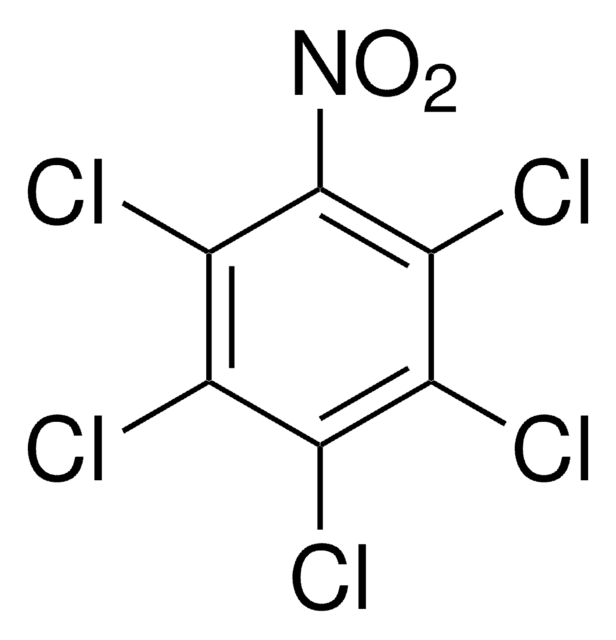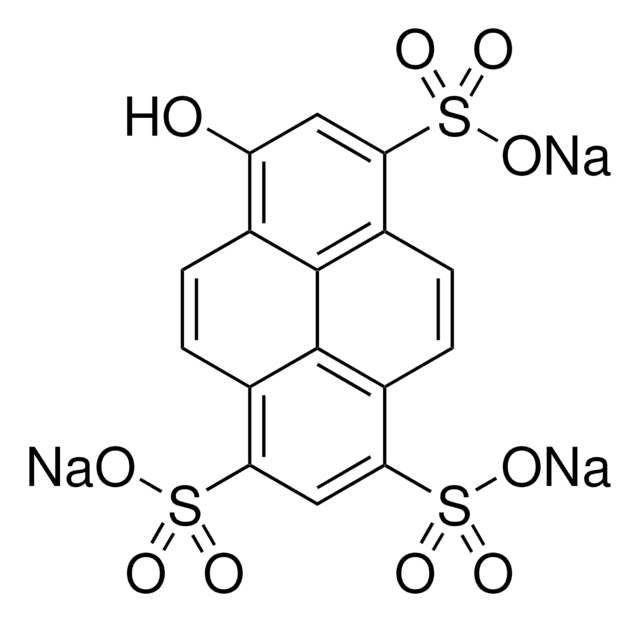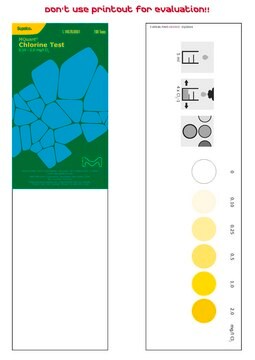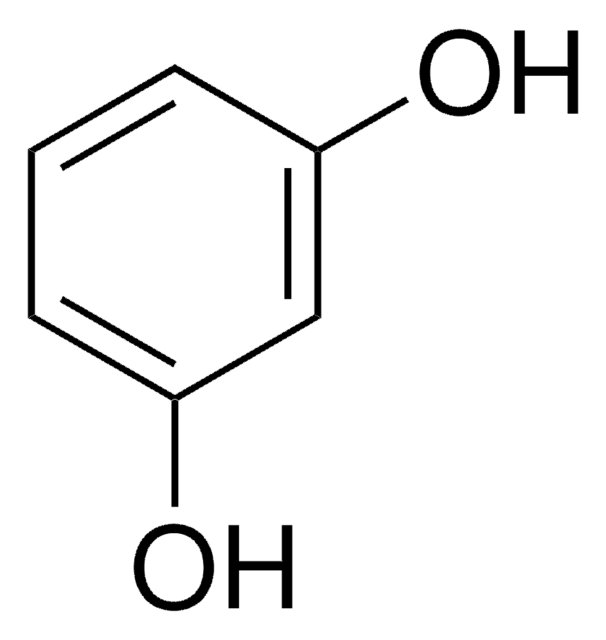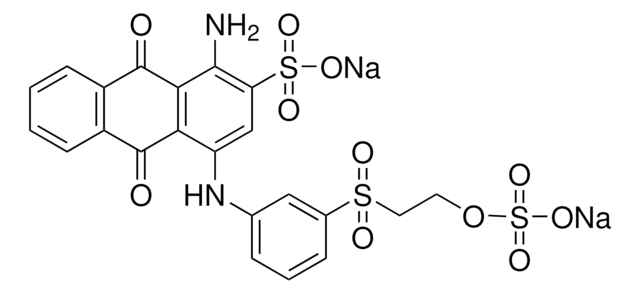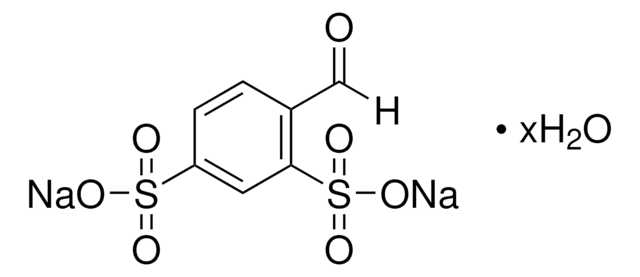45482
Fenaminosulf
PESTANAL®, analytical standard
Sinonimo/i:
4-Dimethylaminobenzenediazosulfonic acid sodium salt, p-Diazodimethylaniline sodium sulfonate, Sodium [4-(dimethylamino)phenyl]diazenesulfonate
About This Item
Prodotti consigliati
Grado
analytical standard
Livello qualitativo
Nome Commerciale
PESTANAL®
Durata
limited shelf life, expiry date on the label
tecniche
HPLC: suitable
gas chromatography (GC): suitable
applicazioni
agriculture
environmental
Formato
neat
Stringa SMILE
[Na+].CN(C)c1ccc(cc1)N=NS([O-])(=O)=O
InChI
1S/C8H11N3O3S.Na/c1-11(2)8-5-3-7(4-6-8)9-10-15(12,13)14;/h3-6H,1-2H3,(H,12,13,14);/q;+1/p-1
IWDQPCIQCXRBQP-UHFFFAOYSA-M
Cerchi prodotti simili? Visita Guida al confronto tra prodotti
Applicazioni
- Cloning and characterization of GABA transporter
- Activity of anti-RSV carbonucleosides
- Inhibition by fungicides of urea hydrolysis and nitrification of urea nitrogen in soil
Prodotti consigliati
Note legali
Non trovi il prodotto giusto?
Prova il nostro Motore di ricerca dei prodotti.
Avvertenze
Danger
Indicazioni di pericolo
Consigli di prudenza
Classi di pericolo
Acute Tox. 3 Oral - Acute Tox. 4 Dermal - Aquatic Chronic 3
Codice della classe di stoccaggio
6.1C - Combustible acute toxic Cat.3 / toxic compounds or compounds which causing chronic effects
Classe di pericolosità dell'acqua (WGK)
WGK 3
Punto d’infiammabilità (°F)
Not applicable
Punto d’infiammabilità (°C)
Not applicable
Dispositivi di protezione individuale
Eyeshields, Faceshields, Gloves, type P2 (EN 143) respirator cartridges
Scegli una delle versioni più recenti:
Possiedi già questo prodotto?
I documenti relativi ai prodotti acquistati recentemente sono disponibili nell’Archivio dei documenti.
Il team dei nostri ricercatori vanta grande esperienza in tutte le aree della ricerca quali Life Science, scienza dei materiali, sintesi chimica, cromatografia, discipline analitiche, ecc..
Contatta l'Assistenza Tecnica.

